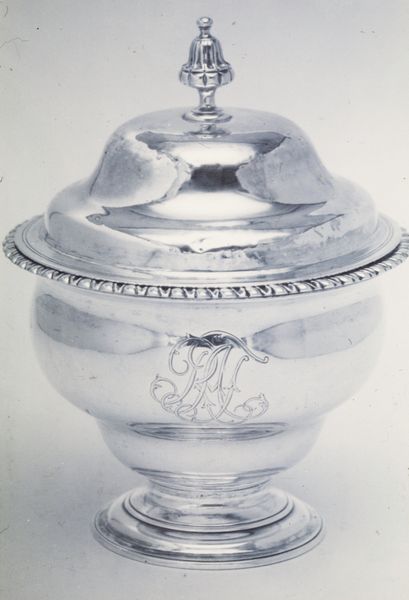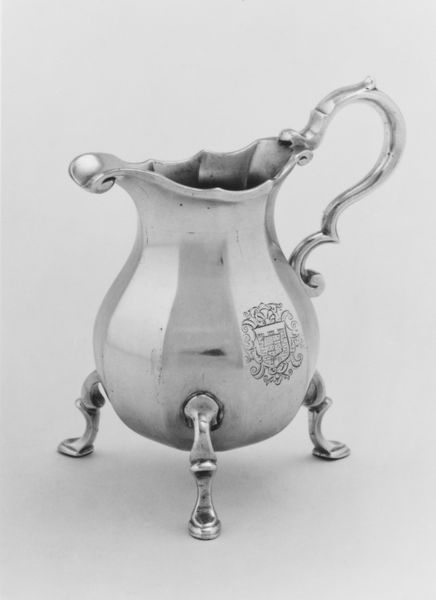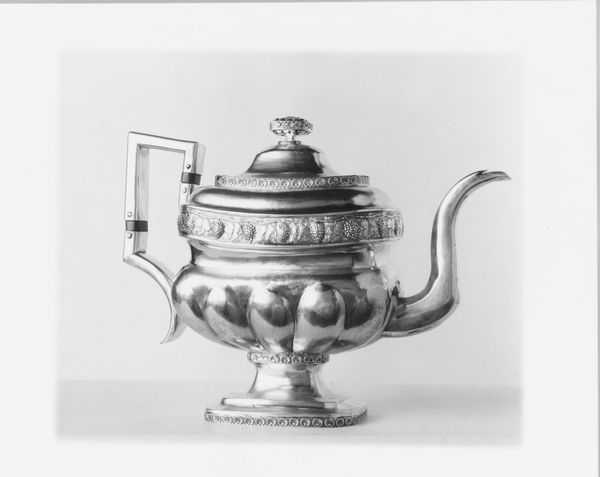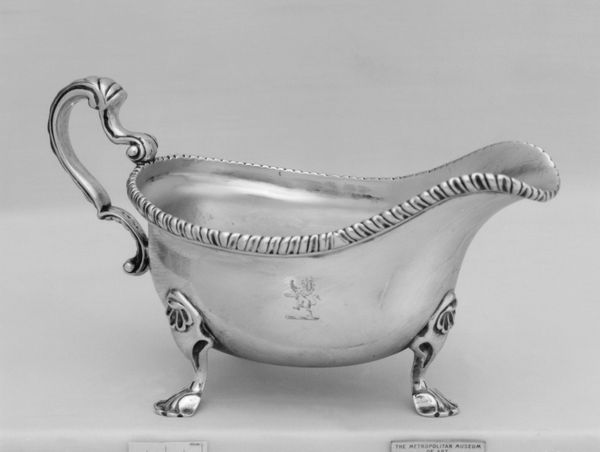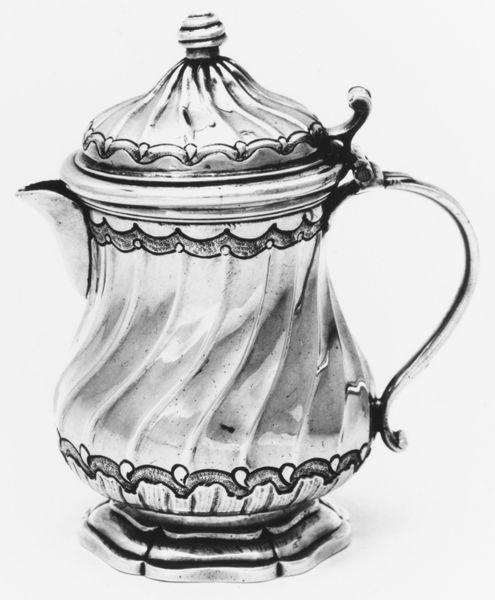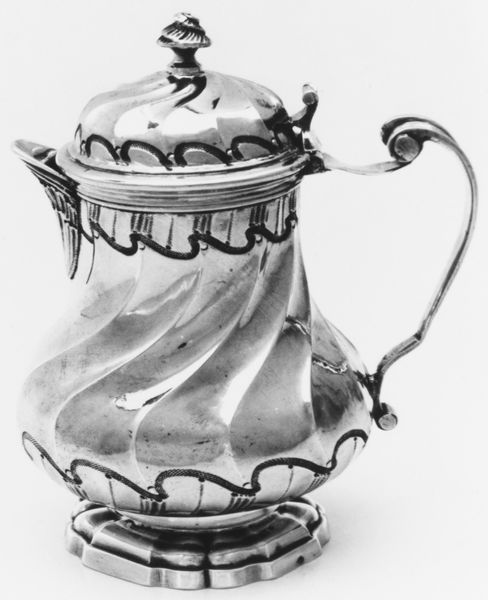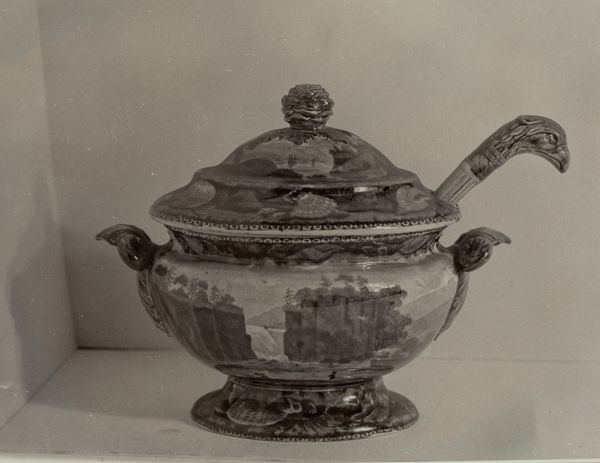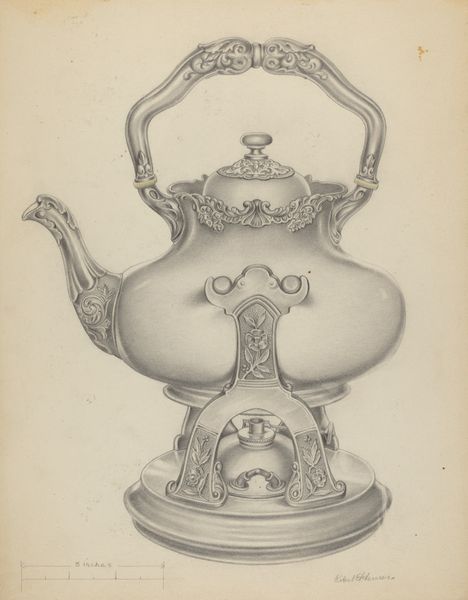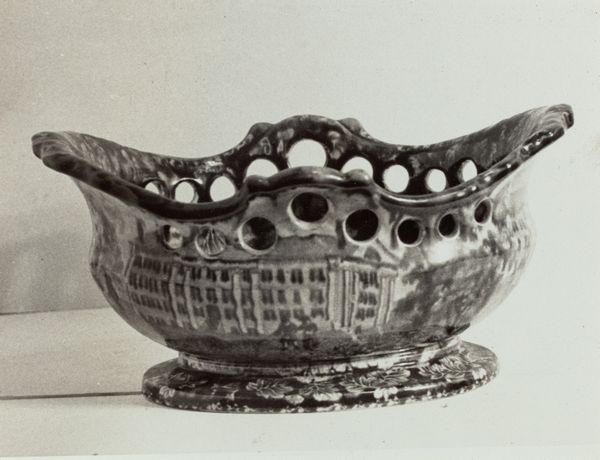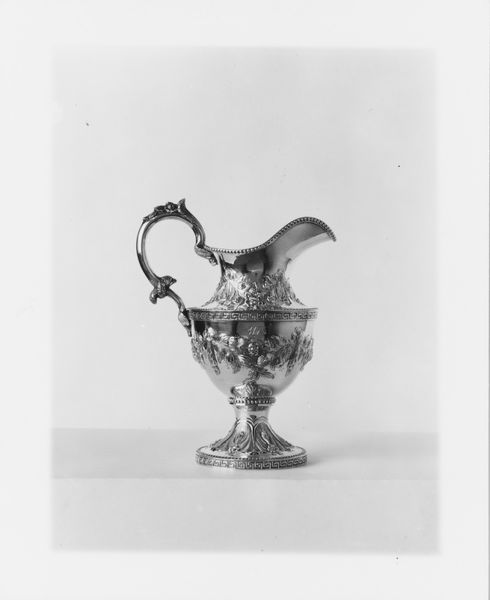
Dimensions: 5 1/2 x 8 1/2 x 3 3/4 in. (13.97 x 21.59 x 9.53 cm)
Copyright: Public Domain
Editor: So, this silver sauce boat, made in 1776 by Thomas Jones, it’s... smaller than I expected, and surprisingly ornate! All the tiny details make me wonder about its role in society. How should we interpret it, looking at it from today’s perspective? Curator: Precisely! Let’s consider this sauce boat as more than a simple kitchen utensil. The Rococo style—with those shell motifs and the flowing lines—reflects the opulence and aristocratic taste of the time. Ask yourself, who would have owned this? And what did it signify? Editor: Well, someone wealthy, definitely. Maybe a family trying to show off their status? Was it common to display wealth in such functional objects? Curator: Absolutely. Objects like this sauce boat served a dual purpose: practicality and a blatant demonstration of wealth and refined taste. Consider the politics of imagery. Think of it: gleaming silver on a table during a time of social inequality. The artistry on display isn't merely aesthetic; it communicates power. It reinforced societal hierarchies. Editor: So it's not just about beauty but about communicating privilege? Even something so mundane as serving sauce could become a political statement. Curator: Exactly. What do you think, would owning something like this shift one's sense of self in relation to society at the time? It is a powerful status symbol after all. Editor: I hadn’t thought of it that way before! It definitely puts a new spin on appreciating decorative arts. This piece reveals more than craftsmanship. Curator: And understanding this adds depth to our view of the 18th century. Every object tells a story beyond its surface appearance.
Comments
No comments
Be the first to comment and join the conversation on the ultimate creative platform.
